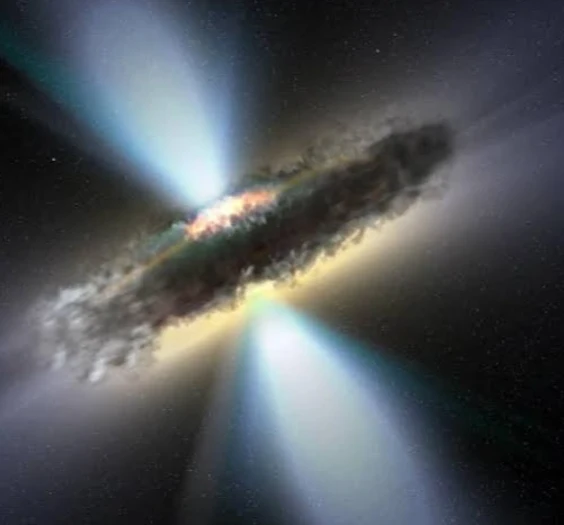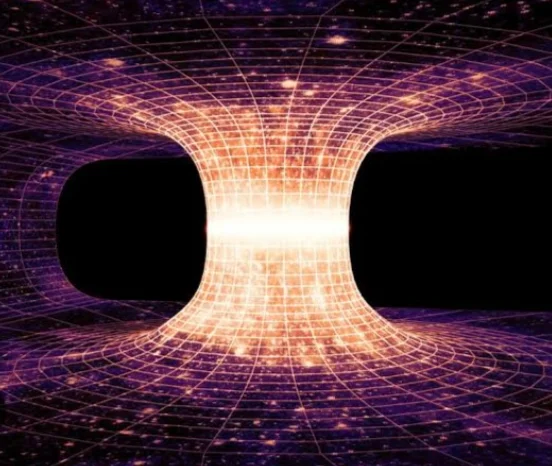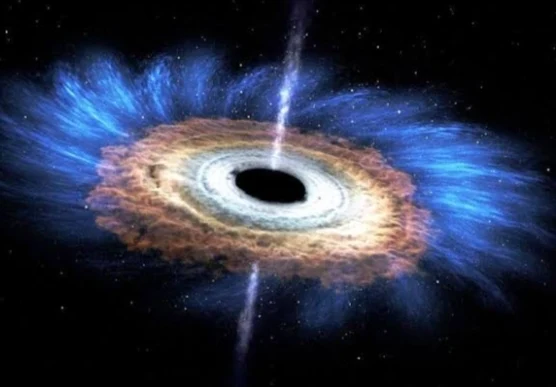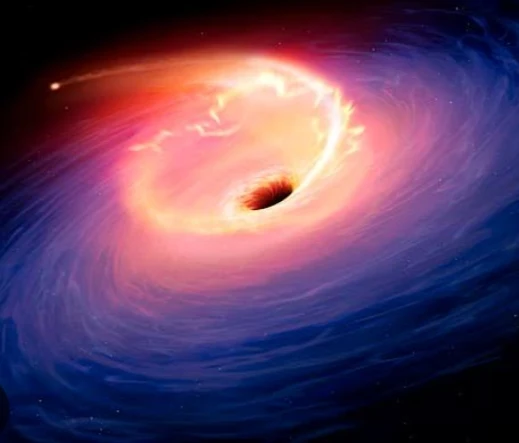White Holes: The Universe's Elusive
White Holes: The Universe's Elusive Counterparts to Black Holes?
Black holes, with their immense gravity that engulfs everything that ventures near, are some of the most fascinating and mysterious objects in the cosmos. But what if there were celestial entities that operated in the opposite way, spewing out matter and energy rather than sucking it in? Enter the realm of white holes, theoretical regions of spacetime shrouded in mystery and ongoing scientific debate.
The Hypothetical Mirror Image:
White holes are often described as the hypothetical counterparts of black holes. While black holes are thought to have incredibly strong gravity, pulling in anything that crosses a point of no return called the event horizon, white holes, if they existed, would function in reverse. They would supposedly expel matter and energy outward with such force that nothing, not even light, could enter.
A Product of Equations, Not Observations:
The concept of white holes arose from Einstein's theory of general relativity. The same equations that describe the formation and behavior of black holes also mathematically predict the possibility of white holes. However, there's a crucial distinction: black holes have been observed, their existence confirmed through various methods, while white holes have never been directly observed.
The Challenges of Existence:
Several factors make the existence of white holes highly improbable:
- Violation of the Second Law of Thermodynamics: This law states that entropy, a measure of disorder, always increases in a closed system like the universe. White holes, constantly spewing out matter, would seemingly contradict this fundamental law.
- Impossibility of Formation: Current understanding of stellar evolution and gravitational collapse doesn't suggest any natural processes that could create a white hole.
- Time Travel Paradox: Some theoretical models envision white holes connecting to black holes through wormholes, creating a time travel paradox. However, the feasibility and implications of such scenarios remain highly speculative.
Types of White Holes
Due to the highly theoretical nature of white holes, there aren't different "types" in the conventional sense. However, there are different ways to conceptualize them based on our current understanding of physics and the limitations they present.
Here are some key points to consider:
1. Classical White Holes:
- This is the most basic concept of a white hole, arising directly from the mathematical solutions of Einstein's theory of general relativity.
- It depicts a region of spacetime with an event horizon, similar to black holes, but with the singularity (a point of infinite density and gravity) located in the future instead of the past.
- Matter and energy would theoretically erupt from this singularity and be expelled outwards forever, violating the second law of thermodynamics.
- The existence of classical white holes is considered highly improbable due to the violation of fundamental physical laws.
2. Primordial White Holes:
- This concept proposes that white holes might have formed during the Big Bang, emerging from the incredibly dense and hot conditions of the early universe.
- Unlike classical white holes, these wouldn't violate the second law of thermodynamics as the universe's entropy was very low at its beginning.
- However, the immense energy required for their formation and the lack of any observational evidence make this scenario highly speculative.
3. Quantum Fluctuations:
- This intriguing idea suggests that tiny fluctuations in the quantum vacuum, the space filled with virtual particles constantly popping in and out of existence, could give rise to white holes.
- These white holes would likely be extremely small and short-lived, existing only for a fraction of a second before evaporating due to Hawking radiation.
- While the concept is theoretically possible, it's beyond our current technological capabilities to detect or observe such phenomena.
4. Wormhole Connection:
- Some theoretical models propose that white holes might be connected to black holes through wormholes, creating a bridge between two points in spacetime.
- Matter entering the black hole on one side could theoretically emerge from the white hole on the other, potentially enabling travel through space and time.
- However, the existence of wormholes and the feasibility of such time travel scenarios remain highly speculative and require further exploration of the fundamental laws of physics.
It's important to remember that white holes are still purely theoretical, and their existence hasn't been confirmed through scientific observation. However, they continue to be a captivating topic in astrophysics, prompting further research and discussion about the universe's mysteries.
The Construction of White Holes
Due to the highly theoretical nature of white holes, currently, there isn't a known method to construct them. They haven't been observed in the universe, and our understanding of physics doesn't suggest any feasible way to create them artificially.
Here are some key points to consider:
- Theoretical Challenges: As previously mentioned, classical white holes violate the well-established second law of thermodynamics. Additionally, current theories of stellar evolution and gravitational collapse don't predict scenarios that could lead to their natural formation.
- Technological Limitations: Even if we had a better theoretical grasp of white holes, creating them would likely require manipulating gravity at an extreme level, which is beyond our current technological capabilities. We lack the necessary technology to understand and control gravity to the degree required for constructing such an object.
- Hypothetical Scenarios: While building a white hole in the real world seems unrealistic, some theoretical models have explored their possible existence in specific circumstances:
- Primordial White Holes: These are purely hypothetical and thought to have formed in the very early universe under extreme conditions, not something we can replicate.
- Quantum Fluctuations: These potential white holes would be extremely short-lived and tiny, making manipulation or construction impossible with current technology.
Given these limitations, it's safe to say that constructing white holes isn't achievable with our current knowledge and technology. However, research into fundamental physics and the nature of spacetime could potentially lead to new insights in the future.
It's important to distinguish between scientific inquiry and science fiction. While the concept of white holes is fascinating and sparks imaginative possibilities, it's crucial to base discussions on the current state of scientific understanding and avoid making claims that are not supported by evidence.
How to Detected White Holes
Unfortunately, due to the highly theoretical nature and current limitations of our technology, we do not currently have a known method to detect white holes if they exist. Here's why:
-
Lack of Observable Properties: Unlike black holes which have observable effects like gravitational pull and accreting disks, white holes wouldn't have any readily detectable signatures. They wouldn't emit light or other forms of radiation, making them difficult to pinpoint in the vast expanse of space.
-
Highly Energetic and Unstable: Theoretical frameworks suggest white holes would erupt with immense energy at a constant rate. This intense energy release would likely be in highly exotic forms like Hawking radiation, which we currently lack the technology to effectively detect.
-
Short-Lived Existence: Some models, like those involving quantum fluctuations, propose white holes with extremely short lifespans, lasting mere fractions of a second. This fleeting existence makes them incredibly difficult to catch in the act of emitting energy.
-
Technical Limitations: Our current telescopes and instruments aren't designed to detect the specific characteristics associated with hypothetical white holes. Even if they existed, our technology might not be sensitive enough to pick up on their faint signals, if any.
However, the search for white holes continues:
- Indirect Observations: Scientists are exploring the possibility of indirect detection by studying the effects of hypothetical white holes on their surroundings. For example, if a white hole existed within a large structure like a galaxy, the unusual properties of the surrounding material or unusual energy signatures might hint at its presence.
- Theoretical Progress: Advancements in our understanding of physics, especially quantum gravity, might shed light on the true nature of white holes and suggest new avenues for detection.
- Technological Development: Future advancements in telescope capabilities and the development of new instruments could potentially provide the sensitivity needed to detect faint signals associated with hypothetical white holes.
Remember, the existence of white holes remains unconfirmed, and our current inability to detect them doesn't necessarily mean they don't exist. As science progresses, our understanding of the universe might change, and new methods for detecting white holes might emerge.
White Holes: A Spark for Further Exploration:
While their existence is currently considered highly unlikely, white holes continue to be a topic of scientific discussion and exploration. They offer valuable insights into the complexities of general relativity and the nature of spacetime. Further research into the universe's fundamental laws might shed light on their true nature and potential role in the grand cosmic scheme.
The takeaway: White holes represent a fascinating and elusive concept within astrophysics. While their existence remains unconfirmed, they continue to fuel scientific inquiry and inspire exploration into the deepest mysteries of the universe.












